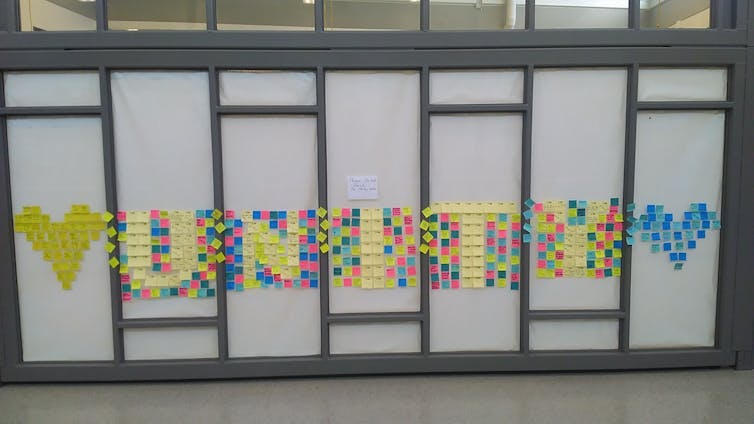Sept. 9, 2019
How high school educators can help girls resist Islamophobia

It seems that 2019 is the year of youth activism. , and .
As a former teacher with the Calgary Board of Education and Little Red River Cree Nation, I have seen youth thrive when adults support their talents, passions and strengths. I have seen how youth respond when adults — the historically and culturally accumulated bodies of knowledge that contribute to well-being.
But not all youth feel supported by their leaders.
I can testify that with first-hand experience. I come from a refugee background: I was part of the group of Vietnamese boat people of Chinese ancestry in the late 1970s. I struggled in school because I didn’t speak English well enough in my early school years. Jim Cummins, a Canadian language education researcher, found that it takes about seven years for learners from immigrant and refugee backgrounds to . As a racialized person, I have generally been and therefore felt devalued in Canadian society.
Because of feeling inferior and not very intelligent, I disengaged from school.
These experiences growing up have left me with a desire to support young people in schools — to help them feel heard and acknowledged. I want to let them know that their voices matter.
I recently and am now a counselling psychologist and researcher. My research looks at the resilience techniques used by oppressed people.
I worked with six minoritized Muslim female youth in high school in a photovoice, . uses photography and group dialogue as a way for marginalized people to deepen their understanding of a community issue. The visual images and accompanying stories become tools to help reach policy- and decision-makers. I chose to call my interviewees “girls” instead of “participants” or “subjects” because I aim to humanize their particular experiences and because of the historically negative gendered language around the word “girl.”
The girls’ determination to challenge issues at school, such as was inspiring to me.
Frightening realities of Islamophobia
Islamophobia is a real and visible problem globally. Recent terrorist attacks in mosques by a and mean some youth at school are having to navigate being bullied and treated harshly due to their intersecting cultural identities of being Muslim and Canadian.
Read more:
In Canada and globally, .

A photo of a student art installation.
Philosopher Iris Marion Young identified : exploitation, marginalization, powerlessness, cultural imperialism and violence. The youth in my research group explained that they and their families have faced all these forms of oppression. Young suggests that those who are oppressed use a deliberative model of democracy to challenge their oppressions. This is a deliberative process with
The girls said it was not uncommon for them to hear about Muslim women having their head scarves pulled off their heads. Some have experienced having their family’s vehicles being vandalized near their mosque. These stories and experiences made them feel othered, scared and nervous.
To help combat these feelings, the young students have written poetry, built art structures and planned anti-racism initiatives. They created positive messages on post-it notes so the messages can be passed on to peers and teachers in hopes that hate has no place in their community.
Throughout this process, it seems that teachers and community leaders have listened to their voices and have supported the students in their initiatives. The girls say that this perceived support has helped them feel more engaged and resilient to negative experiences.
Supporting acts of resistance
By banding together to speak out against racism, the girls say they see changes in their schools. They feel less segregated and more united to support one another regardless of gender, race, sexual orientation and religion.

The project used photography and other tools like these sticky notes to help Muslim girls deal with racism and Islamophobia in their high-school community.
By having the courage to write poetry (poems titled “Shackles of Racism” and “Society is War”) and perform these poems in front of the entire school, they feel they are inviting their peers to talk openly about racism and to collectively think of ideas for anti-racism initiatives.
Read more:
However, it is not up to youth to face this uphill climb alone — even with their strong will and desire to create social change. My preliminary research indicates that when teachers and counsellors listen, in creative ways, it can have positive impacts - both personal and for the school and community.
Adult and educator support on mission-driven youth creative work can bring a feeling of purpose, meaning and . Youth may become more confident about speaking out for issues that matter to them personally.
Therefore, based on my study, I believe it is crucial for adults to hear what youth have to say and encourage their ideas of social change.
It is absolutely phenomenal what youth can do when they work together along with adults who support them in their passions for change. There is no limit to their creativity, activism and civic engagement.
Deep knowledge, daily. . ![]()
, Sessional Instructor, School of Education,
This article is republished from under a Creative Commons license. Read the .

